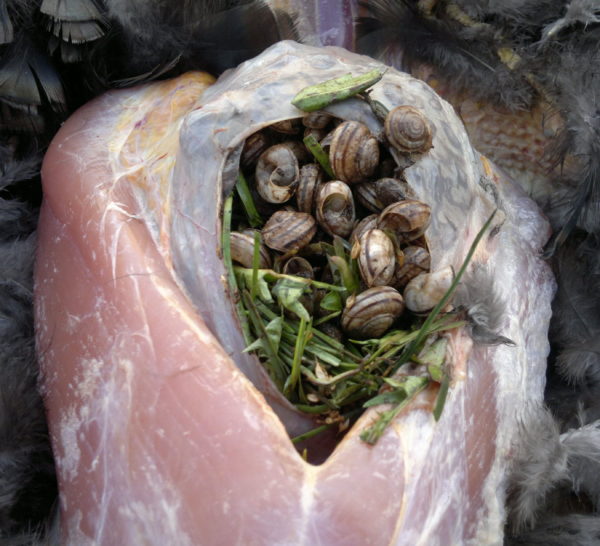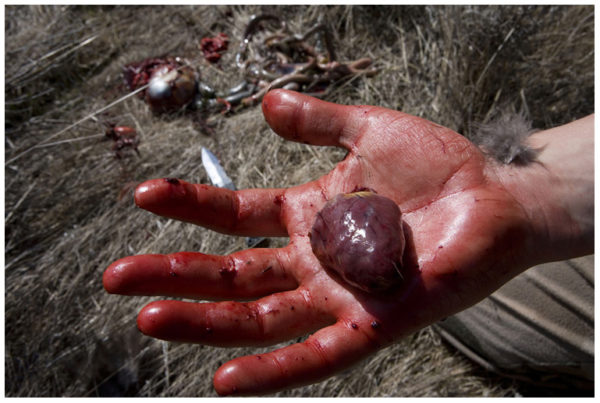
Wild turkeys are the big game of the small game world. Weighing upwards of 25 pounds, a mature bird is capable of supplying multiple meals for even a large family.
While many states have fall turkey hunting seasons, hunting for these birds is generally regarded as a spring activity. April or May brings on their breeding season. This is the time of year when males fill the woods with the sounds of their raucous and unmistakable gobbles, which serve to both attract females and challenge rival “gobblers,” or toms. If there’s a mistake that beginner turkey hunters make, it’s thinking that these boisterous birds are easy prey.
Sure, the turkeys running around the enforced no-hunting zone of your suburb or golf course might seem half tame. But the gobblers that make their living out in the wild, where hunters pursue them on a regular basis, become the smartest and wariest creatures in the woods. Becoming a successful turkey hunter requires a mastery of turkey language and also a solid understanding of stealth and camouflage. But the effort is well worth it. Handled properly, the flesh of wild turkeys is well flavored, tender, and versatile.
Scientific Name
Meleagris gallopavo
A.K.A.
Gobblers
Bar Room Banter
At the time of European contact, wild turkeys occupied thirty-nine states; by the early 1900s they had been extirpated from over half of them. Now, thanks to the efforts of organizations such as The National Wild Turkey Federation, the turkey is completely recovered and then some. Forty-nine states, all but Alaska, have regulated turkey seasons. There are substantiated rumors that wild turkeys can now be found on Alaska’s Kenai Peninsula, so someday we have turkey seasons in all fifty states.
Considering the great abundance of turkeys in the U.S., it’s hard to believe that about fifty percent of all turkey nests are destroyed by predators. And of the polts that do hatch, well below fifty percent will live long enough to turn one year old. From there, things don’t get any easier for turkeys. A study in Kentucky showed that 70% of the male turkeys that reach two years of age are killed by hunters every spring. Despite the high attrition, turkey populations remain strong across the U.S. and the long-term viability of turkeys and turkey hunting looks great.
Another interesting thing about turkeys is the breast sponge, a spongy layer of fat that sit above the bird’s breast. An adult gobblers breast sponge is most fully developed right before breeding season, when it might account for 10% of the bird’s total weight. It is not nearly so prevalent in a one-year-old tom, called a jake. The reserves in the breast sponge allow a gobbler to devote all his energies toward breeding without needing to emphasize eating.That is why you so really kill a spring gobbler with a full crop. They just do not eat all that much in the spring.
Physical Characteristics
Largest game bird in North America. Males stand 46” tall and average around 20 pounds. Females stand 37” tall and average around 10 pounds. Both sexes appear generally dark in color, but on closer inspection they have an array of iridescent colors including bronze, green, and copper. Wings have bold barring of white or cream; rump and tail feathers are tipped with white or cream.
The necks and heads of turkeys are slender and generally featherless and reddish in color; the heads of males can change colors from blue to red depending on their mood. Males have spurred legs and a feather tuft, or beard, protruding from their chest. Beards on mature males can be 10 inches or longer. Perhaps as many as 15% of hens will have a beard as well, though they are generally much thinner and less conspicuous than the beards of males.
Traditionally there are a number of turkey subs-species that are recognized by hunters and biologists: the Eastern and Osceola of the eastern U.S. and Florida, and the Merriams, Rio Grande, and Goulds of the West and Southwest. Each variant has its own subtle differences in appearance, though it usually requires a trained eye to tell them apart.
Habitat
Turkeys occur in a wide variety of habitat types, from desert riparian zones to the Florida savanna. They generally require open ground for feeding and mating, and denser forested areas for evading predators and roosting. The species does particularly well in areas of mixed agriculture, particularly with brushy or timbered riparian zones.
Telltale Sign
Look for tracks, feathers, salad-bowl-sized dusting bowls, scratch marks from feeding on the forest floor, and wing-tip drag marks on dusty roads or field edges where gobblers strut during breeding season.
Diet
Widely varied. Acorns, beechnuts, and other hard mast; fruits and seeds; a wide variety of grasses, forbs and leaves; agricultural crops such as wheat, corn, sorghum, and rye; insects, small reptiles, snails, and even rodents.
Life and Death
Life span is typically 3-5 years, though some turkeys live much longer. Nest raiders like snakes, foxes, skunks, crows, ravens, raccoons, black bears and coyotes prey on the un-hatched. In addition to those predators, hawks, owls, bobcats, and mountain lions will snatch young birds and sometimes adults.
Breeding and Reproduction
Mating season can be as early as February in Southern States; April and May for most states. Hens lay an average of 12 eggs, usually laying one per day. Incubation begins when all eggs are laid, in order to synchronize hatching. The incubation period is 28 days.
Edibility
Breast is tender white meat. Thighs, legs and wings are tougher dark meat. Turkeys can be roasted or smoked whole, but many careful wild game cooks handle the light and dark meat differently. Turkey giblets, the gizzard, liver, and heart are excellent.
Hunting Opportunities
Hunting is available in 49 states. Sometimes there is a lottery, but in most cases tags are over the counter or included with the purchase of an upland game license. There is wide availability, with separate spring and fall seasons. Spring hunts are usually only for male turkeys, while fall hunts typically allow for both sexes to be harvested.


Hunting Methods
During spring turkey seasons, hunters are limited to gobblers. For that reason we’ll be dealing solely with the pursuit of male turkeys in this discussion of spring methods. While it’s possible to kill gobblers in a variety of ways, including ambushing them along travel corridors and in feeding areas, turkey hunters who want to consistently kill turkeys from one year to the next should learn to target gobblers by calling and decoying the birds into range of either a bow or shotgun.
For the sake of discussion, I’m going to break the process of hunting turkeys into five steps, due to length these, they will all be covered individually. The links are below:





Conversation